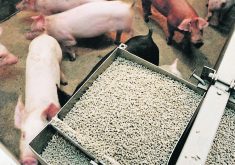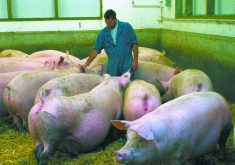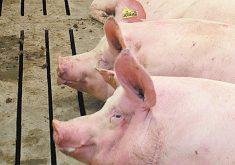Most farmers were able to make money on market hogs in the first few months of 2024, but prices have weakened
DES MOINES, Iowa — It’s better than losing a lot of money, but hog producers are facing razor-thin profitability for the remainder of 2024, say two leading hog market analysts.
“I don’t see us as much better than break-even,” said Steve Meyer, who gave a number of hog market outlooks at the World Pork Expo, in an interview.
You can find all our World Pork Expo 2024 coverage here.
“We’re in a recovery period,” said Christine McCracken of agriculture banking giant Rabobank in an interview, describing 2023 profitability as “some of the worst losses for the industry that we’ve ever had.”
Read Also

House ag committee to undertake several studies
The House of Commons standing agriculture committee has set its agenda for the coming months. Members began the fall sitting with a two-hour update on international trade
Most farmers were able to make money on market hogs in the first few months of 2024, but prices have weakened. Meyer said he earlier predicted average 2024 profits at US$10 per head but now expects losses of $2 per head.
Right now, the top 25 per cent of producers can break even with a cost of production of $87, but the average is $97, and that’s below where prices are expected for the rest of the year.
Meyer said big corn and soybean crops, if realized, would help reduce the cost of production, but prices won’t likely fall enough to make the year too rewarding.
The ever-scary fourth quarter also looks risky this year, with U.S. hog slaughter capacity “right-sized” now. That means any unexpected loss of capacity could send autumn prices into a tailspin, Meyer said.
Last year, fourth quarter prices fell into the $50s, and that could happen again if things go bad.
McCracken said pork export market demand is strong, which is helping make up for the relative weak demand in U.S. domestic markets. So far, the meat complex appears to be handling the outbreaks of avian influenza in egg-laying chicken flocks and on a handful of dairy operations.
“It’s really a question of how the consumer might react,” said McCracken.
There are no signs of reduced dairy consumption, so problems with bird flu might be restricted to the egg market, which has seen higher prices as flocks have been hit and production has fallen.
For all the problems in last year’s hog market, the uninspiring market this year and probably better market next year are relatively positive.
“For the next year, year and a half, things should be pretty good,” said McCracken.


















